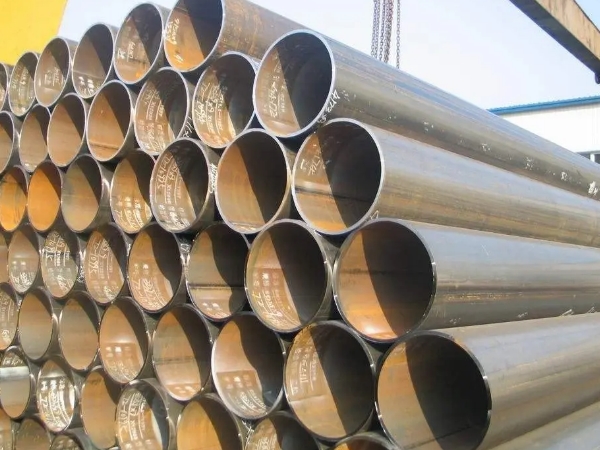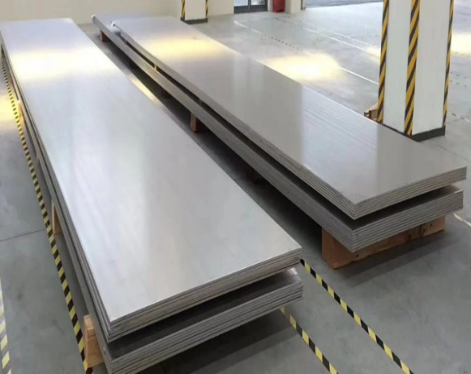What is welded pipe?
Welded pipe refers to a steel strip or steel plate that is bent and deformed into a round, square, etc. shape and then welded into a steel pipe with seams on the surface. The blank used for welded pipe is steel plate or strip steel. With the rapid development of continuous rolling production of high-quality strip and the advancement of welding and inspection technology, the quality of welds has been continuously improved, the variety and specifications of welded pipes have been increasing, and seamless steel pipes have been replaced in more and more fields. Welded steel pipes have lower cost and higher production efficiency than seamless steel pipes. So what should be paid attention to in the installation process of welded pipes?
Precautions when installing welded pipes
1) Before the welded pipe is installed, trenches should be excavated according to the drawings, the masonry of the pipe well has been completed, the various welded pipes required have been handed over, the quality is good, and it has passed the inspection. The required construction equipment including electric welding machines, cutting machines, electric motors, hammers, grinders, etc. are ready, and only a series of preparations can start the installation.

2) When installing the bayonet groove and steel groove, its position and size must be accurate, and no misalignment and skewness can occur.
3) The size and shape of the wooden strips for the fixed grooves should be accurate and the wood should meet the design requirements. The size of the wooden strips is accurate, which can not only ensure the appropriate tightness of the wooden strips and the steel grooves, and does not require strong knocks during installation to avoid damage to the steel groove surface, but also ensures that the steel groove surface is consistent with the cylinder surface, and there is no uneven phenomenon. The shape of the wooden strip is accurate, so that the cemented surface of the steel groove can be evenly embedded after the wooden strip is embedded, and the bonding is guaranteed to be firm, and the sideways phenomenon of the groove surface can be prevented.
4) According to the drawing design, prefabricate the prefabricated pipe frame according to the site conditions, then cut it according to the design and site, then polish the groove with a polishing machine, and then carry out welding. During the welding process, the strip is sent to the pipe welding unit, where it is gradually rolled up during a multi-pass rolling process to form a round tube blank with open gaps. Adjust the pressing amount of the kneading roller, control the weld gap within the range of 1 to 3mm, and make both ends of the weld level. If the gap is too large, the proximity effect will reduce the lack of eddy current heat and the poor intergranular connection of the weld, resulting in non-fusion or cracking; if the gap is too small, the proximity effect will increase and the welding heat will be too large, resulting in welds burn, otherwise deep pits will form in the welds after kneading and rolling.
Quality inspection of welded pipes after installation
1) The branch pipe shall not be welded at the welding seam, and the welding of the elbow shall be avoided.
2) The error of vertical equipment is less than 3mm per meter, and the error of horizontal equipment is less than 1mm per meter.
3) The surface quality of longitudinally welded pipes(ERW pipe or LSAW pipe) should be lubricated, and defects such as folding, cracking, delamination, and lap joints are not allowed. Minor defects on the surface of welded pipes (such as scratches, scratches, misalignment of welds, burns, scars, etc.) should not exceed the negative tolerance of wall thickness.
Welded pipe refers to a steel strip or steel plate that is bent and deformed into a round, square, etc. shape and then welded into a steel pipe with seams on the surface. The blank used for welded pipe is steel plate or strip steel. With the rapid development of continuous rolling production of high-quality strip and the advancement of welding and inspection technology, the quality of welds has been continuously improved, the variety and specifications of welded pipes have been increasing, and seamless steel pipes have been replaced in more and more fields. Welded steel pipes have lower cost and higher production efficiency than seamless steel pipes. So what should be paid attention to in the installation process of welded pipes?
Precautions when installing welded pipes
1) Before the welded pipe is installed, trenches should be excavated according to the drawings, the masonry of the pipe well has been completed, the various welded pipes required have been handed over, the quality is good, and it has passed the inspection. The required construction equipment including electric welding machines, cutting machines, electric motors, hammers, grinders, etc. are ready, and only a series of preparations can start the installation.

2) When installing the bayonet groove and steel groove, its position and size must be accurate, and no misalignment and skewness can occur.
3) The size and shape of the wooden strips for the fixed grooves should be accurate and the wood should meet the design requirements. The size of the wooden strips is accurate, which can not only ensure the appropriate tightness of the wooden strips and the steel grooves, and does not require strong knocks during installation to avoid damage to the steel groove surface, but also ensures that the steel groove surface is consistent with the cylinder surface, and there is no uneven phenomenon. The shape of the wooden strip is accurate, so that the cemented surface of the steel groove can be evenly embedded after the wooden strip is embedded, and the bonding is guaranteed to be firm, and the sideways phenomenon of the groove surface can be prevented.
4) According to the drawing design, prefabricate the prefabricated pipe frame according to the site conditions, then cut it according to the design and site, then polish the groove with a polishing machine, and then carry out welding. During the welding process, the strip is sent to the pipe welding unit, where it is gradually rolled up during a multi-pass rolling process to form a round tube blank with open gaps. Adjust the pressing amount of the kneading roller, control the weld gap within the range of 1 to 3mm, and make both ends of the weld level. If the gap is too large, the proximity effect will reduce the lack of eddy current heat and the poor intergranular connection of the weld, resulting in non-fusion or cracking; if the gap is too small, the proximity effect will increase and the welding heat will be too large, resulting in welds burn, otherwise deep pits will form in the welds after kneading and rolling.
Quality inspection of welded pipes after installation
1) The branch pipe shall not be welded at the welding seam, and the welding of the elbow shall be avoided.
2) The error of vertical equipment is less than 3mm per meter, and the error of horizontal equipment is less than 1mm per meter.
3) The surface quality of longitudinally welded pipes(ERW pipe or LSAW pipe) should be lubricated, and defects such as folding, cracking, delamination, and lap joints are not allowed. Minor defects on the surface of welded pipes (such as scratches, scratches, misalignment of welds, burns, scars, etc.) should not exceed the negative tolerance of wall thickness.









